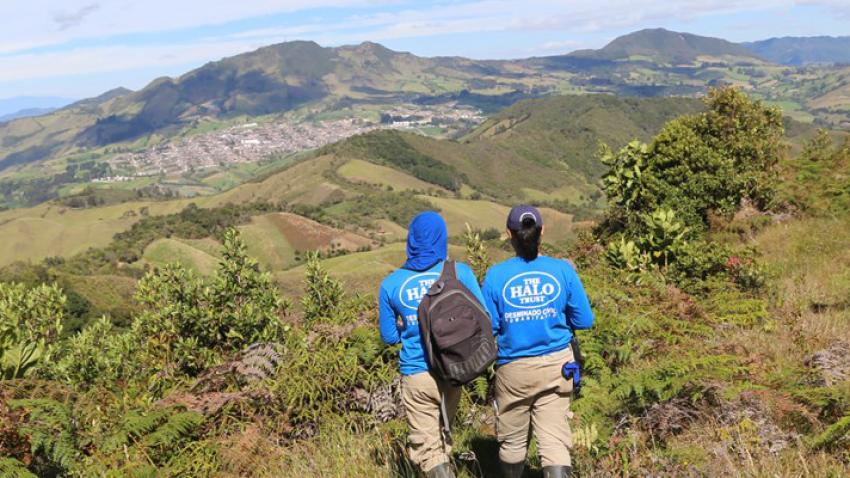The humanitarian mine action project in Planadas took place from July 2017 to July 2018 and is part of a wider effort by the HALO Trust, National Mine Action Authority and the Colombian Armed Forces to survey and clear land mines and explosive remnants of war from Tolima. The project is intended to be scaled up to clear 52 Colombian municipalities of land mines.
The project brought multiple benefits for the Planadas community, touching on several Sustainable Development Goals, ensuring better health for its residents (SDG 3), helping gender equality and women's empowerment (SDG 5), boosting economic opportunities (SDG 8) and contributing to a lasting peace (SDG 16).
First, the HALO survey and de-mining teams employed 40 local residents for the duration of the project, 30 per cent of whom were women. These workers also included former combatants who had completed their reintegration process into the community, supporting the process of reconciliation and reparations.
During the one-year project period, 28 explosive items were destroyed safely, each of which could have resulted in death or injury. More than 1,100 Colombians living in land mine danger zones also participated in 36 educational sessions on mine risk, which is expected to promote safe behavior and reduce future accidents.
Finally, the mine clearance returned abandoned land to productive use, allowing local farmers to improve their livelihoods. Now, residents can travel safely between villages, allowing for better trade and other economic opportunities.
What are the inspiring breakthroughs and success stories that illustrate SDG implementation? What are the good practices that can be replicated and scaled up? What are the gaps and constraints and how should we address them? Looking ahead, what steps should we take to accelerate progress? To help answer these and other questions, UN DESA gathered more than 600 good SDG practices in a searchable online database. Be inspired by SDG solutions that work: https://sustainabledevelopment.un.org/partnerships/goodpractices
Photo courtesy of the HALO Trust

